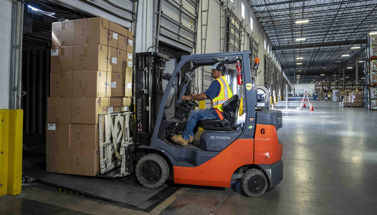
Drayage Defined and How it Can Benefit Shippers
Drayage: the act of transporting cargo over a short distance.
While its definition may be short, drayage plays a big part in your freight’s full supply chain from source to final destination.
Drayage has been around as long as shipping – some may say even before. In fact, the term derives from the word “dray” which was the name for a horse-driven cart with low sides used to transport goods from dock to a larger wagon or rail car. In today’s market, the industry typically uses the term when a container is being moved by truck and chassis.
Drayage movements can apply to many types of shipments – port to receiver, shipper to origin rail terminal, shipper to port, port to rail yard, or destination rail terminal to receiver, etc. For sake of time however, we’ll outline its role with an intermodal move.
Let’s say you’re shipping a container from Asia to Chicago. The container arrives from port of origin on a vessel and is discharged at the port of entry. A truck with a chassis arrives where the container is; it is then mounted and secured onto the chassis for transport to a nearby intermodal rail yard (generally within 50 miles).
The container is then transferred onto a railcar, known as a well car or double-stack car, and travels across the U.S. to another intermodal yard in the Chicago area. From there, the container gets mounted onto a chassis and the truck moves the cargo to its final destination. In this shipping scenario, the trucking portion on the first mile – from port to rail yard, and last mile – from rail yard to final destination, provided the drayage service.
What are the Benefits of Drayage?
According to the Intermodal Association of North America (IANA), approximately 60,000 containers and trailers are transported on a typical day. With that many containers moving simultaneously, drayage has its benefits for shippers – one of which is cost savings by avoiding expensive accessorial fees.
Demurrage fees are one of those charges a well-thought-out drayage strategy can help avoid.
Demurrage is a charge by the ports to incentivize cargo owners to get their cargo quickly moved out of the port to prevent congestion and space constraints. When using a third-party container, upon its arrival into the port of entry, that container is given a window of free storage time at the port before demurrage fees kick in. These fees, on average, are applied on most containers after three or five days, depending on the port operator. By pre-arranging dray services, it can put your cargo at less risk of accumulating demurrage.
A secondary accessorial charge shippers might face is per diem. Per diem is the fee associated with keeping the equipment, in this case the container, past the contractual time frame with the equipment owner. Per diem can also mean a fee charged by the trucking carrier if the driver is waiting in addition to a set amount of time to load or unload a container. To potentially avoid those fees, shippers can arrange a ‘strip and dray’ where their cargo is transferred to a central point off the terminal, unloaded from the ocean container and into a truck, and allowing the ocean container to return to the port within its free-time window.
Creating your drayage and supply chain strategy with these extra costs in mind will put your cargo on the right path for a successful journey.
Key Tips for Shippers
Now that we understand what drayage is and the benefits it offers, here are 3 tips for effectively using drayage in your supply chain strategy from TB’s logistics experts:
- Plan your shipping and delivery appointments well in advance and stick to them. By ensuring your cargo is ready for pick up and that the delivery point is prepared to accept the shipment, it avoids your cargo from being held up or delayed – resulting in excess chassis, per diem, and storage costs that can add up quickly.
- Consolidate your shipments to reduce costs. Combining your smaller shipments into a larger load can reduce the amount of dray moves you have to pay for. If you are only moving one small shipment, ask your logistics provider to see if they can combine your load with other various clients.
- Partner with a trusted, reliable logistics provider. They are the experts and will be able to provide advice. It’s in their best interest to help keep your costs down and they have the industry relationships to deliver your goods efficiently and safely.




